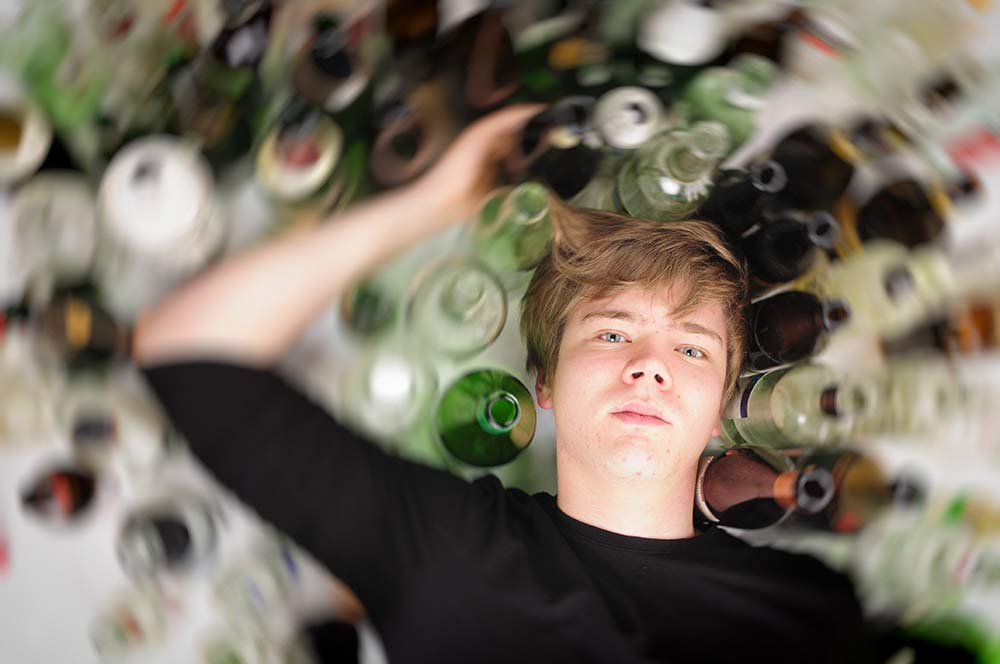Read the latest and greatest from our team
of incredible specialists.

Beach House Recovery Center » Blog » Risk Factors of Teen Drinking: Short & Long Term Effects of Underage Drinking
Underage drinking leads to more problems than just a hangover the next day. The life-altering consequences of underage drinking are associated not only with the substance itself but also with the behaviors and risk factors that come with abusing alcohol. With the development of their brains, bodies, and behavior still taking place, teens suffer greater immediate impacts, as well as increased risks for substance abuse problems in adulthood.
Effects on brain development can include neurodegeneration that causes impediments to learn and memory loss; cognitive deficits; and impairments to perception and comprehension. These same effects can lead to problems in school and work even after drinking has ceased because the damage has already been done. Bodily harm while under the influence, such as that resulting from physical and sexual violence, can also have a lasting psychological impact long after the drinking is done. Behaviors that develop over time from a place of impairment can lead to a life of poor decision-making and lower rates of success and satisfaction overall.

Since access to alcohol is more limited due to age restrictions, teen drinking is rarely merely social and often expressed as binge drinking. The combination of lack of impulse control and the propensity for risk-taking behavior more common in adolescence, paired with the still developing, decision-making part of the brain, creates a disturbing effect on brain development that can lead to severe and sometimes deadly consequences.
These factors together lead to higher levels of alcohol abuse among adolescents, alcohol poisoning, memory loss, lack of coordination, run-ins with the law and an unhealthy relationship with alcohol that can continue on into adulthood, creating greater prevalence of addiction later on with more severe consequences.
Because underage drinking is illegal, there is also a greater risk of legal consequences among teens. Impaired decision-making and higher incidence of blackouts during binge drinking episodes also increase the risk for experiences of sexual violence and trauma—and these, in turn, can lead to serious consequences in the present and impact the course of a person’s sexual experiences over a lifetime.
Binge drinking also leads to higher rates of physical assault, increase of addiction later on in life, and erratic behaviors resulting in negative effects on relationships as well as an inability to create steady and satisfying educational and employment opportunities.
According to the Journal of Health Economics, underage drinking doubles the probability of smoking and with it adds the many health risks and consequences associated with smoking, especially during the critical period of lung development of adolescence. Risks include susceptibility for lung cancer and stunted lung development. Illicit drug use also goes up as a result of drinking, leading to deaths from accidental overdose and other dangerous side effects when mixing drinking and drugs. Addiction rates and the progression of effects on healthy development also increase.
Teen drinking leads to a decline in participation in school and negative impacts on learning and performing in school-related tasks. Students engaged in underage drinking fall behind on assignments and score lower on tests as a result of memory loss and negative effects on cognitive function. Lower grades and lower attendance rates can lead to delayed graduation, and the situation is only compounded with more limitations on college choices and later on. Employment opportunities are likewise narrowed to jobs that accommodate drinking and drinking-related behaviors, impacting earning capacity over a lifetime.
According to findings from the “Monitoring Futures Survey” collecting data on high school-aged young adults nationwide, underage drinking leads to “health-compromising behaviors that often co-occur with youth drinking, such as smoking, illicit drug use, and risky sexual behaviors.” Teen drinking not only interrupts healthy development in various parts of life, including school, work, and home but also leads to deadly consequences with higher rates of youth mortality as a result of car crashes and even suicide.
Such research underscores a need for increased public awareness and understanding about both the immediate and long-term risks of drinking among teens. As fodder for that conversation, and in summation, the following is a list of all of the consequences of underage drinking:
Whether you’re researching for yourself or a loved one, Beach House can help. We understand that this is a serious time in your life and that the treatment center you choose matters. We want you to feel comfortable and empowered to make the right decision for yourself, a friend, or a family member. This is why a counselor is waiting and available to answer your questions and help put your mind at ease regarding the next steps. Many of the staff at Beach House have walked in your shoes. If you feel you’re ready or want more information about how to help a loved one, we can help today. You can also learn why we are voted the #1 rehab for addiction treatment in Florida.
We accept most major insurance plans and can verify your benefits quickly and confidentially.
We’re committed to helping you access the care you need, our admissions counselors can guide you through your coverage options and available resources.





"*" indicates required fields